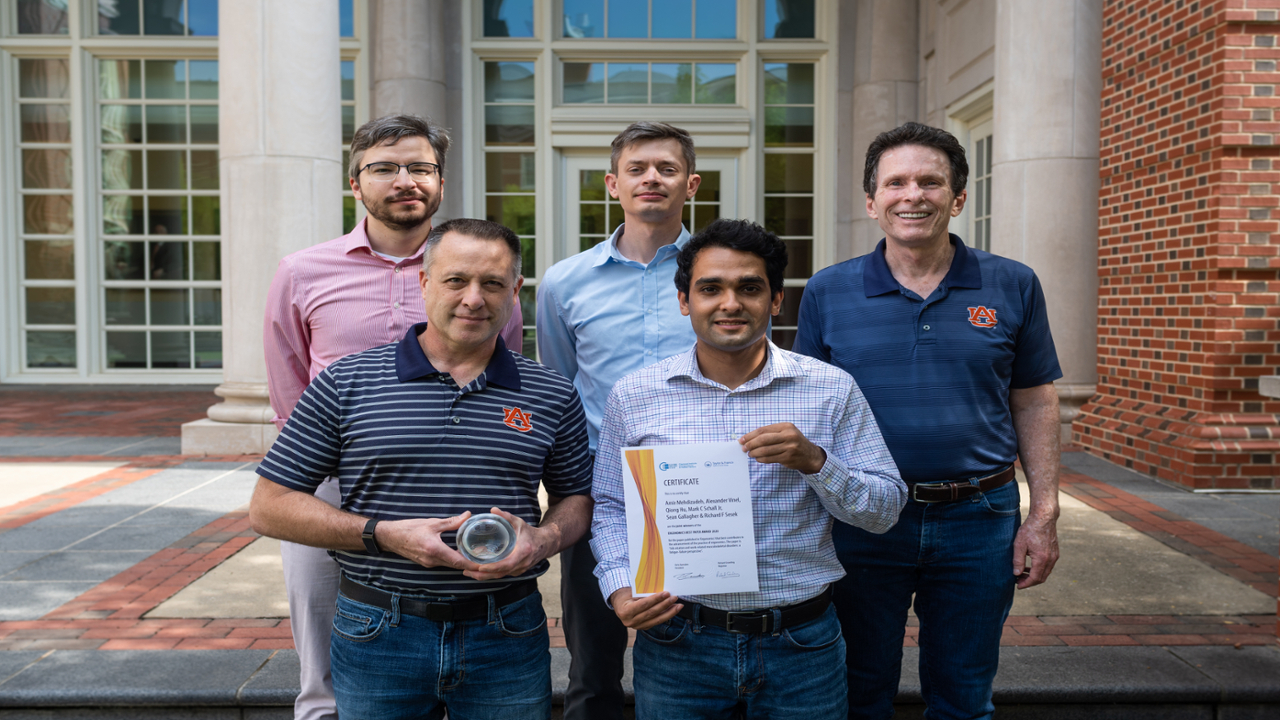Industrial and systems engineering researchers win ‘Best Paper Award’
Published: Aug 31, 2021 2:45 PM
By Carla Nelson
A team of researchers in Auburn University’s Department of Industrial and Systems Engineering was recently recognized for its contributions to the advancement of the practice of ergonomics through being awarded the “Best Paper Award 2021” by the “Ergonomics” journal.
This award recognizes the paper published in the journal that best contributes to the advancement of the practice of ergonomics, as judged by the editors. The Liberty Mutual Research Institute for Safety and the Chartered Institute of Ergonomics and Human Factors (CIEHF) established the award to promote excellence in safety and health research.
The award-winning paper, published by Auburn University Department of Industrial and Systems Engineering professors Aleksandr Vinel, Mark Schall, Sean Gallagher and Richard Sesek, as well as doctoral students Amir Mehdizadeh and Qiong Hu, is titled “Job rotation and work-related musculoskeletal disorders: a fatigue-failure perspective.”
The “Best Paper” award was presented by Roger Haslam, editor-in-chief of the journal, through the Chartered Institute of Ergonomics & Human Factors Professional Awards Ceremony black-tie virtual event held on June 18.
“This paper was notable for its rigor in adding to evidence of the limitations of job rotation as a measure to prevent MSDs, a very important topic in our field,” Haslam said of the paper.
Vinel accepted the award on behalf of the team and explained during the ceremony that there have been recent results indicating that the idea of having workers rotate between a number of tasks as a way to reduce exposure to injury may increase the overall population at risk. The team’s goal was to look into the mechanism of why and how this may be happening.
“We started with a fatigue failure model for workplace musculoskeletal disorder development and constructed a mathematical model quantifying the tradeoff inherent in the rotation,” Vinel explained of the research. “On one hand, exposure to the workers with high-risk decreases, but the exposure for the low-risk workers increases. What this model shows is that this tradeoff is never positive when evaluated over the whole population of workers. While a few of the most exposed workers benefit, the overall pool population exposure increases, which then leads to higher overall risk of injuries.”
He explained that if a single, high-risk job is present, the overall expected number of injuries increases substantially.
“We conclude that the rotation alone cannot be expected to substantially help in alleviating the effect of high-risk jobs and musculoskeletal injuries,” he said. “Of course, rotations may still have some other benefits, such as psychosocial factors and increased productivity.”
Schall explained that job rotation is a strategy used in many organizations in an attempt to reduce occupational exposure to risk factors associated with work-related injuries and illnesses.
“Although the practice has shown to offer some benefits such as improved worker cross-training and reduced monotony for repetitive tasks, our paper indicates that the effectiveness of job rotation is highly dependent on the mix of jobs through which workers rotate,” he said.
He added that the findings reinforce the importance of using job redesign to eliminate high-risk tasks to prevent injuries and illnesses and aligns with other recent work suggesting job rotation must be carefully planned for optimal results.
“I feel honored that our paper was selected,” he said. “There have been many excellent papers published in Ergonomics, especially in 2020.”
Click here to watch the award ceremony.
Media Contact: , cmn0023@auburn.edu, 334.844.1401
Pictured: Top row - Aleksandr Vinel, Mark Schall, Sean Gallagher. Bottom row - Richard Sesek, Amir Mehdizadeh





